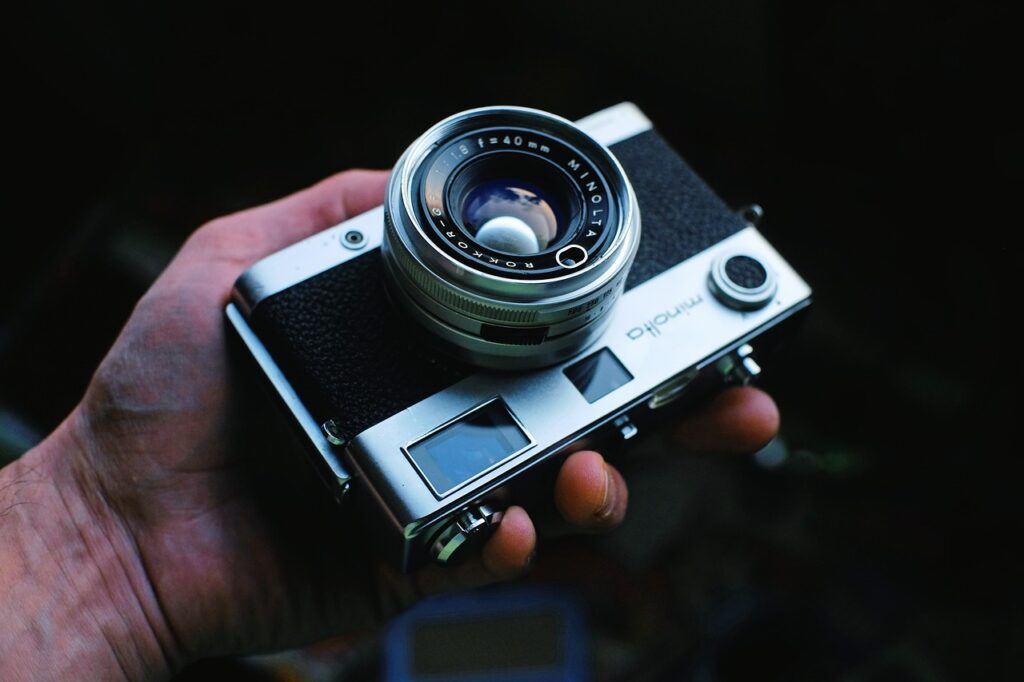People often ask, what technology is used in an ultrasonic rangefinder?
Let’s find out!
What Technology Is Used in an Ultrasonic Rangefinder?
An ultrasonic rangefinder is a device that uses sound waves to determine the distance between two objects. It can be used for many different purposes, such as measuring distances, determining the size of objects, and detecting obstacles.
The technology behind this type of device has been around since the early 1900s, but it wasn’t until the 1990s that it became widely available.
What Is an Ultrasonic Sensor?
Ultrasonic sensors measure distances by emitting high-frequency sounds (ultrasound) and then listening for echoes from objects.
Ultrasonic sensors use a transducer to transmit and detect ultrasonic waves that relay back information about objects’ distance from them.
When high-frequency sounds bounce off surfaces, they create distinctive echoes.
How do Ultrasonic Sensors Work?
Ultrasonic sensors use sound waves to detect objects. They transmit an ultrasound signal through air or water, which then bounces off any object in their path.
Ultrasonic sensors use one transducer to transmit an ultrasonic signal and then another transducer to detect the reflected signal. They determine the distance to a target using measurements of the elapsed times between transmitting and receiving the ultrasonic pulses.
The working principle of this module is simple; it sends an ultrasound wave out at 40 kHz which travels through the atmosphere and bounces off any obstacles or objects. By measuring the travel times and the speed of sound (which is approximately 340 m/s), the distances can be calculated.
Ultrasonic sensor technology is a great solution for detecting clear objects. For liquid levels, applications using infrared (IR) sensing technologies struggle with this particular use case due to the translucent nature of liquids.
Ultrasonic sensors detect objects regardless if they’re made out of any kind of materials, including metal, wood, plastic, glass, etc. unless the object is very soft like wool.
Ultrasonic technology is often used for detecting objects behind walls, under floors, and inside pipes.
How Does the Arduino Ultrasonic Range Finder Work?
To measure the distance between two objects using ultrasonic sensors, we first need to determine the speed at which the object moves. We then calculate the distance from the known velocity and the measured travel time.
The ultrasonic rangefinder uses high-frequency sound to determine the distance between itself and its target. It then calculates the distance by measuring the time taken for the sound wave to travel from the device to the object and back again.
Since the speed of sound in the air is a known constant (343 m/s), the distance can be calculated.
Now let’s take a closer look at the HC-sr04 rangefinder. It has two pins for power supply (5V) and ground. These pins are connected to the Arduino board through a breadboard.
GND: Ground reference is connected to this pin.
When triggered, the sensor sends out an 8kHz signal which is reflected back after a certain period of delay. From this delay, we calculate the distance between the transmitter and receiver using trigonometry.
When the sensor detects an object at a certain distance, its output changes from low to high.
Ground: Connected to this pin.
16×2 AlphanumericA Display (LCD)

What Technology Is Used In A Ultrasonic Rangefinder?
What are Distance Sensors?
Proximity sensors determine whether something is nearby by measuring electrical signals rather than physical contact.
How do Distance Sensors Work?
Ultrasound sensors emit an ultrasound wave which then reflects off objects and returns to the sensor. When the return echo is detected, the sensor calculates its distance from the object.
The difference between the measurements can be in the forms of either:
- the time it takes for a message to be delivered back to you.
- the strength of a returned signal
- the phase change of the reflected signal.
Types of Distance Sensors
Now that we have an understanding of what distance sensors are, we’ll dive into the various distance measurement sensors on the market, each with its own sensing technologies. Here’s the rundown of the different distance sensor types!
Ultrasonic Sensor
What is an Ultrasonic Distance Sensor?
The Ultrasonic Sensor is arguably the most common distance measuring sensor, also known as the Sonar sensor. It detects the distance to objects by emitting high-frequency sound waves.
Infrared Distance Sensors
Second on this list is IR distance sensors, short for infrared. Most commonly associated with the Sharp GP2Y0A21YK0F, it does distance or proximity sensing through emitting IR wave and calculating the angle of reflection.
IR sensors come with two lenses:
An IR LED emitter lens that emits a light beam
A position-sensible photodetector (PSD) where the reflected beam will fall onto
Laser Distance Sensors: LIDAR
LIDAR, short for Light Detection and Ranging, can be considered a laser distance sensor. It measures the range of targets through light waves from a laser instead of radio or sound waves.
LED Time-Of-Flight Distance Sensors
Lastly, we’ll take a look at the LED time-of-flight sensors. Most commonly associated with the VL53L0X, it’s part of the broader spectrum of LIDAR, which uses time-of-flight technology in measuring distances.
Why use an Ultrasonic Sensor?
Ultrasound is reliable in any lighting environment and can be used inside or outside. Ultrasonic sensors can handle collision avoidance for a robot and are being moved often, as long as it isn’t too fast.
Ultrasonics are so widely used, that they can be reliably implemented in grain bin sensing applications, water level sensing, drone applications, and sensing cars at your local drive-thru restaurant or bank.
Ultrasonic rangefinders are commonly used as devices to detect a collision.
Ultrasonic Sensors are Best Used in the Non-Contact Detection of:
- Presence
- Level
- Position
- Distance
- Non-contact sensors are also referred to as proximity sensors.
Ultrasonics are Independent of:
- Light
- Smoke
- Dust
- Color
- Material (except for soft surfaces, i.e. wool, because the surface absorbs the ultrasonic sound wave and doesn’t reflect sound.)
- Long-range detection of targets with varied surface properties.
Ultrasonic sensors are superior to infrared sensors because they aren’t affected by smoke or black materials, however, soft materials which don’t reflect the sonar (ultrasonic) waves very well may cause issues. It’s not a perfect system, but it’s good and reliable.
Conclusion
We hope that this article was helpful. If you have any queries feel free to reach out in the comments section below.
Author
-

Herman is a writer, researcher, and product reviewer here at The Outdoor Stores. His knowledge and expertise in firearms are immense. He knows well which gun is suitable for which purpose and how to handle it correctly. You can benefit from his passion by reading his posts on this website.






